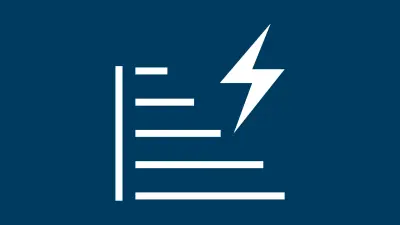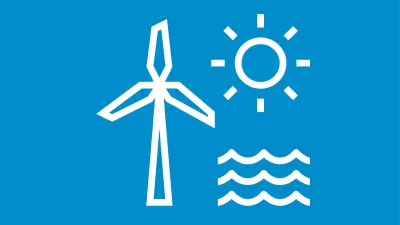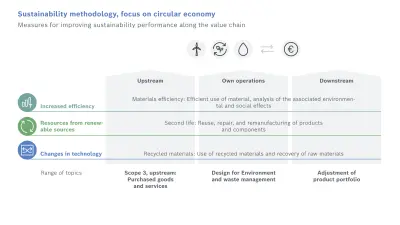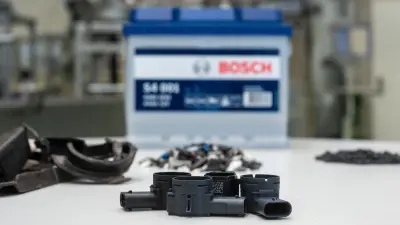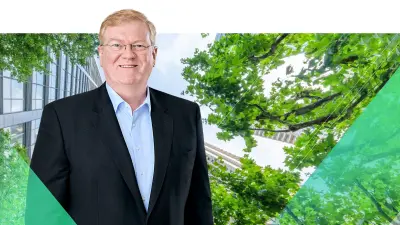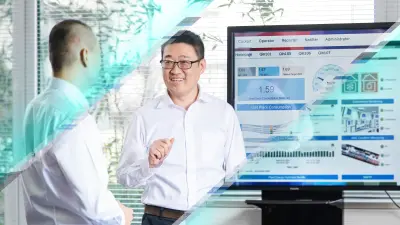Environmental protection along the value chain

We pursue specific strategies for climate action, to save water, and to establish a reliable circular economy.
Climate action
Climate change is one of the biggest challenges facing humanity: stopping it is a task for society as a whole.
As early as 2020, the Bosch Group with its more than 400 locations worldwide has been carbon neutral overall (scope 1 & 2)*. Four levers were used to achieve carbon neutrality: increasing energy efficiency, generating our own energy from renewable sources (new clean power), purchasing electricity from renewable sources (green electricity), and — as the last resort — using carbon credits to offset residual CO₂ emissions. In 2023, residual emissions of around 581,000 metric tons of CO₂ were offset by carbon credits.
At the same time, we also want to reduce emissions produced outside Bosch’s direct sphere of influence (scope 3), for example at suppliers, in logistics, or when our products are used. Our aim is to reduce these upstream and downstream emissions by 15 percent in absolute terms by 2030, compared with the baseline year 2018 — irrespective of our company’s growth.
As early as 2020, the Science Based Targets initiative (SBTi) endorsed our climate targets for the 1.5 degree pathway.** Bosch now has science-based climate targets for the entire value chain — from purchasing to the product use phase.
* Scopes 1, 2, and 3 are used here in accordance with the Greenhouse Gas Protocol Corporate Accounting and Reporting Standard. We have taken into account the effects of CO₂ and of other greenhouse gases, as well as climate-relevant substances, to the extent that these are of relevance for the analysis. To enable comparability between the climate impact of the various greenhouse gases and substances of relevance for the climate, emissions are presented in CO₂ equivalents. For ease of reading, we use the terms CO₂ and CO₂ equivalents synonymously.
** Robert Bosch GmbH’s entry in the SBTi’s target dashboard

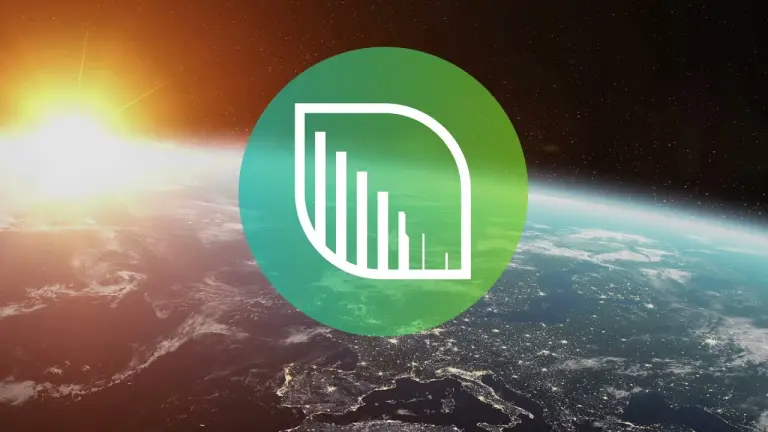
Loading the video requires your consent. If you agree by clicking on the Play icon, the video will load and data will be transmitted to Google as well as information will be accessed and stored by Google on your device. Google may be able to link these data or information with existing data.
Climate action across the entire value chain
We want to shape climate action beyond our immediate sphere of influence (scopes 1 and 2) and, where possible, also systematically reduce upstream and downstream emissions (scope 3). We aim to cut these by 15 percent in absolute terms by 2030 compared with the baseline year 2018. In this process, we are focusing on the categories that make up around 98 percent of our scope 3 emissions: upstream emissions in the Bosch value chain primarily concern purchased goods and services as well as logistics. Downstream emissions are mainly caused by the use of our products.
Purchased goods and services
To reduce upstream CO₂ emissions in purchasing, we drew up a steering concept that includes two instruments:
- General target agreements with suppliers to improve CO₂ performance, preferably in combination with a specific SBTi commitment.
- Specific agreements for focus materials such as steel, aluminum, copper, and plastics as these materials are responsible for a significant portion of CO₂ emissions in the supply chain. To purchase materials that are as low-carbon as possible in the future, we carried out a number of measures in 2023, including analyzing the specific CO₂ reduction potential and identifying reduction paths, as well as launching initial pilot projects in some divisions.
Logistics
In logistics, we aim above all to reduce CO₂ emitted during the transport of goods. We have a variety of instruments at our disposal here:
- Optimizing freight
- Using alternative drives and fuels
- Reducing air transport
- Improving packaging design
- Consistent use of the total cost of ownership (TCO) approach
Product use
Although energy efficiency in product development has a high priority for Bosch, around 90 percent of scope 3 emissions are generated during the product use phase. We currently see the greatest potential for lowering CO₂ emissions in those divisions in which products require a relevant amount of energy, that is above all mobility, thermotechnology, industrial drive and control technology, and household appliances. The focus is on three leverage points in each case:
- Boosting energy efficiency
- Market transformation and portfolio optimization
- Transformation of the energy sector through the use of green electricity, hydrogen, and biogas
At 458 million metric tons of CO₂ in the baseline year 2018, upstream and downstream emissions exceeded those in scopes 1 and 2 several times over.
Since 2018 we have cut our scope 3 emissions by around 23 percent, down to 353 million metric tons of CO₂ in 2022. This is because the percentage target value for reducing emissions was purposefully set independently of sales growth, which means that the absolute amount to be mitigated will increase steadily as the company grows in future. We can directly influence the achievement of targets through more efficient products. On the other hand, there are also a large number of external factors that Bosch can only influence indirectly, such as suppliers’ success in reducing CO₂ emissions, the speed of transformation processes in the energy and mobility sector, or general economic development.
For further information on the scope 3 emissions of the Bosch Group, see our key figures tool.
Uniform sustainability methodology enables systematic control
The environmental dimensions of our vision for sustainability are underpinned by the same logic. This is characterized by three core levers: increasing efficiency, purchasing resources from renewable sources, and changing the technology used. The three core levers can be applied to the entire value chain.
In this way, we create transparency with regard to the impact of the different measures, we show the relationships and interactions between the various influencing factors — and we thus provide the basis for in-depth scenarios in order to capture and control the effects of decisions in their entirety. This also reveals the additional differentiation potential of sustainability topics that will be of particular importance to Bosch in the future — as illustrated by trend and market analyses.

By consistently implementing the principle of the circular economy, it is possible to combine climate action, resource conservation and greater resilience for companies and their supply chains.
Circularity for a more sustainable product portfolio
With our circular economy strategy, we want to enhance the sustainability of our products over their entire life cycle – from procurement and production to use, return, and remanufacturing, right through to recycling and reuse of materials.
To this end, we endeavor to either create loops directly within Bosch or close them outside the company using established recycling processes. This way, we reduce the amount of materials used and our products’ carbon footprint*** and contribute toward achieving our scope 3 target. At the same time, we also avoid potential risks relating to compliance with environmental and social standards. Building a closed-loop system for materials has the particular advantage of eliminating parts of the value chain that are subject to risks, such as extraction of raw materials.
*** Unless otherwise stated, carbon footprint takes into account all greenhouse gas emissions ranging from raw material extraction to transport, production, sales, and use through to disposal of the product (cradle to grave) (see DIN EN ISO 14067).
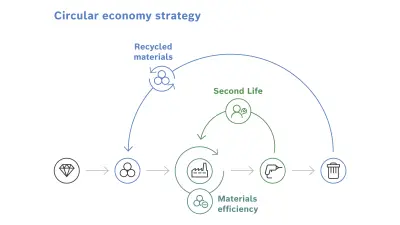
Three levers of circularity
In our circular economy strategy we use a model comprising levers that can be applied across the entire value chain. Depending on the markets in which our divisions operate, however, the levers differ in their degree of effectiveness, are not equally applicable across the board, and therefore offer different development potential.
Materials efficiency
Improvements in materials utilization can reduce resource consumption and also cut the manufacturing cost of a product. Bosch can also directly influence the corresponding measures. For years, improvements in materials efficiency in production processes and the materials efficiency of our products have therefore been an essential element of our product development process, where it is anchored in an internal standard via the Design for Environment (DfE) principle.
Second life
In the second lever, we have grouped together those measures that allow us to improve material flows or to close loops within the company. The concepts and activities of the divisions range from reusing products and their components to repairs and right through to remanufacturing — in each case with the objective of extending product and component life cycles.
Recycled materials
The third lever of our circular economy strategy — recycled materials — covers all measures to close the loop in the economy for materials such as steel, aluminum, and plastics. This way, we can reduce the use of primary materials, and lessen our environmental impact — as well as human rights risks from the extraction of raw materials. Our use of recycled materials also means that we are supporting the achievement of our scope 3 target.

We are focusing our efforts on areas where water is particularly scarce — and are using specific solutions to create the greatest possible benefit there.
Responsible use of water
Conscientious use of water is one of Bosch’s major priorities worldwide. Here, too, we have been pursuing a clear strategy for many years to counteract the scarcity of water.

We analyzed our company locations using the Water Risk Filter provided by the World Wide Fund for Nature (WWF). According to this analysis, 72 of our sites are located in areas of severe or severest water scarcity. We have set ourselves a target of reducing absolute water withdrawal at the 72 sites identified by 25 percent by 2025 compared with our 2017 baseline year — and in 2023, we achieved this goal.
-25.6 percent
Bosch has reduced its water withdrawal at locations in water scarce regions by 25.6 percent compared to 2017.
Three starting points for conservative water use
Bosch needs water for cooling systems, sanitary facilities, and technical processes. In areas with a strained water situation, we already use recycled water wherever possible by re-using water several times in a cycle. We will further expand this measure. In addition, we focus on process improvements and the use of rainwater in order to further reduce water withdrawal at our locations.
Improve processes so that less water is needed
Improve circulation to reuse the water consumed
Use rainwater instead of fresh water
In 2023, we were able to nearly double the quantity of rainwater used company-wide year on year to 140,000 m³.
